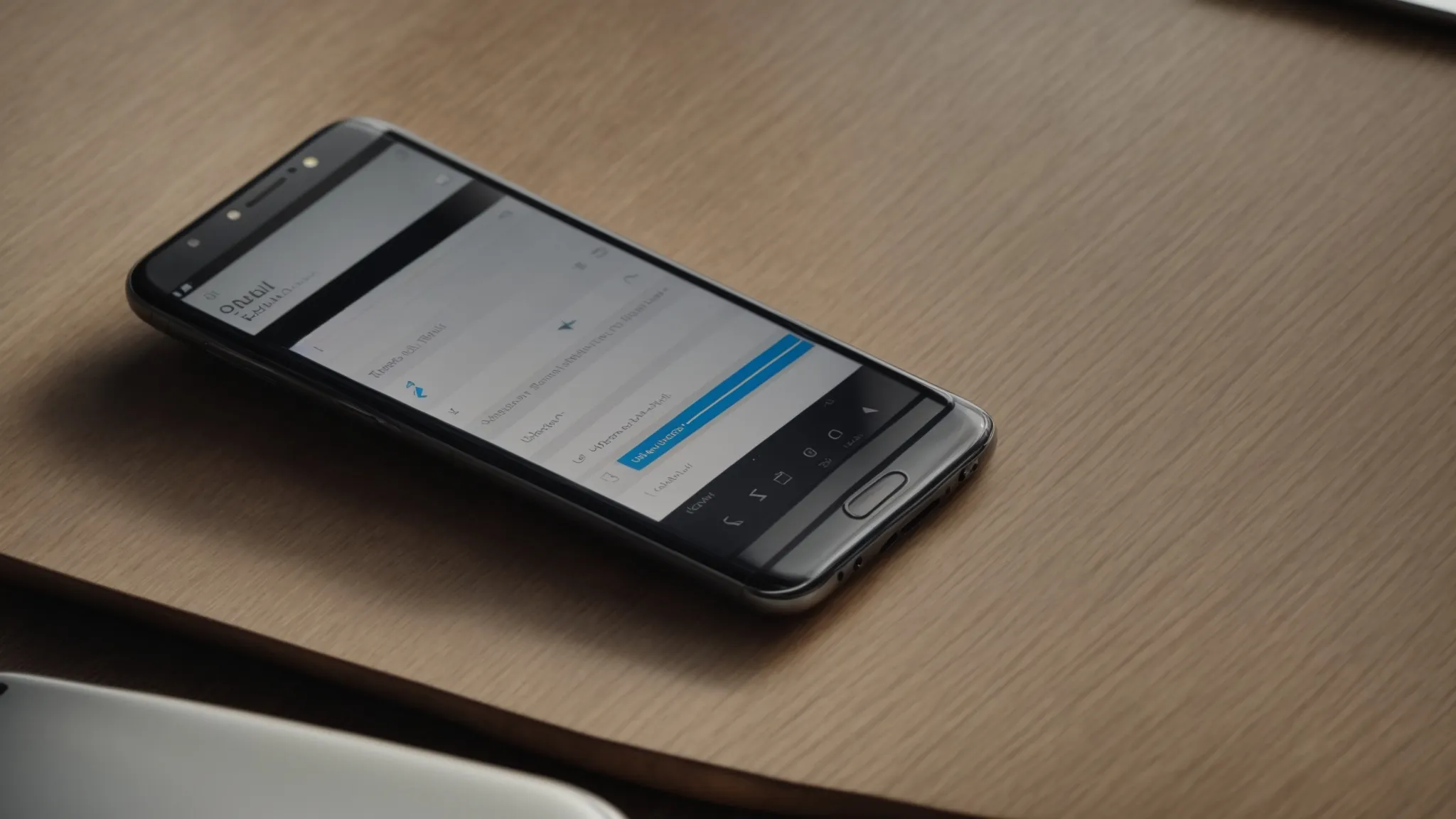If you're looking to elevate your brand visuals, our professional graphic design services can help you create standout marketing materials that connect with your audience.

How to Optimize Your Website for Mobile Devices
How to Optimize Your Website for Mobile Devices
In today's digital landscape, optimizing your website for mobile devices is no longer just an option—it's a necessity.
With the increasing reliance on smartphones for internet access, a mobile-friendly site can dramatically enhance user experience and significantly boost your web traffic.
Whether you're a seasoned web developer or just starting out, understanding and implementing mobile optimization best practices can set you apart in this competitive market.
In this article, we'll dive deep into the essentials of mobile optimization, from responsive web design to mobile-first thinking, providing you with actionable tips to ensure your website stands out on every device.
Keep reading to unlock the secrets of creating a mobile-optimized site that drives both engagement and results.
Key Takeaways
Embracing Responsive Web Design Improves Both User Experience and SEO Performance
Mobile-First Design Optimizes Engagement and Conversion Rates by Catering to the Majority of Internet Users
Technical Optimizations Like CSS Minification and Leveraging a CDN Are Essential for Quick Website Load Times on Mobile Devices
Gathering and Implementing Customer Feedback Is Crucial for Refining the Mobile Experience
Creating a Mobile Application Can Enhance Brand Presence and Offer a More Direct and Personalized User Engagement
Get Content Delivered Straight to Your Inbox

In today's digital age, ensuring that your website is optimized for mobile devices is more than just a best practice; it's a necessity. Why? Because the majority of internet traffic now comes from smartphones and tablets. This shift in user behavior dictates a move towards mobile-friendly websites, where content, design, and functionality harmoniously blend to offer a seamless user experience on any device.
One of the keys to achieving this is responsive design. It's a technique where your website automatically adjusts its layout and content to fit the screen size of the device it's being viewed on, whether it's a desktop computer, a laptop, or a mobile phone. This means rethinking how menus collapse into icons or how content is displayed to ensure it's as easy to scroll through on a smartphone as it is on a wider screen.
Moreover, optimizing for mobile goes beyond just visual design and layout. It involves ensuring that your website loads quickly on any device, facilitated by practices like minification of CSS and JavaScript, and using a Content Delivery Network (CDN). These technical optimizations play a crucial role in enhancing customer experience by minimizing wait times and making sure your website is always just a quick tap away.
Lastly, consider the power of a mobile-optimized site to improve your visibility on search engines. Responsive web design isn't just favored by users; it's also a significant factor in search engine optimization. Google, for instance, prioritizes mobile-friendly websites in its search results. Therefore, by optimizing your site for mobile devices, you're not just catering to your audience's preferences but also boosting your market visibility and potentially your revenue.
Why Mobile-First Design Is Essential

In today's bustling digital marketplace, adopting a mobile-first design is not just an advantage; it's essential. This approach ensures that your website is crafted from the ground up with the mobile user's needs and behaviors in mind. Seeing that a significant chunk of web traffic and online shopping originates from mobile devices, it's a strategy that aligns with where the consumers are.
I've noticed that websites prioritizing mobile-first design tend to perform better in terms of user engagement and conversion rates. The reason is simple: these sites offer an optimized experience for the vast majority of users who access the internet via their smartphones and tablets. By focusing on mobile usability from the start, businesses can create a smoother path for customer interaction and satisfaction.
Engaging in mobile-first design compels me to think critically about the content and features that are truly necessary for my audience. It's a practice that encourages simplicity and directness, helping to eliminate anything that doesn't serve a clear purpose or enhance the user experience. In doing this, not only do we streamline our websites for mobile devices, but we also end up with more focused and efficient websites overall.
Furthermore, embracing a mobile-first approach has a direct impact on my website's ability to compete in organic search rankings. Search engines like Google have made it clear that they favor mobile-friendly websites, incorporating mobile usability into their algorithms. Therefore, prioritizing mobile-first design is also a strategic SEO move, enabling my website to climb higher in search results and attract more visitors.
What Does Responsive Web Design Mean?

Responsive web design means creating websites that fluidly respond to the screen size, platform, and orientation of the device viewing them. This approach is key to optimizing your website for mobile devices. It ensures that no matter where your audience is or what device they're using, they get an optimal viewing experience without needing to zoom, scroll excessively, or navigate through unwieldy menus.
The beauty of responsive design lies in its flexibility: A website can adjust its layout, font sizes, and navigation to suit a desktop computer, a tablet, or a smartphone. This adaptability enhances usability and ensures that the website looks great and functions well on any device. It's a practice that aligns perfectly with the current shift towards mobile-first thinking.
Implementing responsive web design starts with adopting fluid grids and flexible images, and applying CSS media queries to manage content appearance on different devices. These technical elements allow a website to detect the visitor's screen size and orientation, and change the layout accordingly:
Fluid grids scale elements proportionally, rather than fixing them to specific pixel dimensions.
Flexible images adjust within their containing elements to ensure they're never displayed beyond their container's width.
CSS media queries enable the application of different styles based on the device's general type (such as a mobile phone or desktop), its display characteristics (like screen resolution or aspect ratio), and even environmental conditions (like ambient light conditions).
This strategy not only improves user experience but also contributes positively to your site's SEO performance. Google rewards mobile-friendly websites with better rankings, recognizing their value in delivering a superior user experience. By embracing responsive web design, I make my website accessible and appealing to both users and search engines, laying a solid foundation for mobile optimization.
How to Think Mobile-First When it Comes to Web Design

Embracing a mobile-first approach in web design is not just about adapting to the smaller screens; it's about reimagining the experience from the ground up to engage your audience effectively.
This paradigm shift encourages me to focus closely on my audience, soliciting customer feedback to understand their needs deeply.
It's about recognizing that the constraints of a mobile device, such as a reduced screen size, are actually opportunities to refine and clarify my design aesthetic.
By distilling my website's essence, ensuring every pixel and interaction serves a purpose, I can craft an environment that's not just mobile-friendly but truly centered around mobile users.
Following these guidelines, let's delve into how to hone in on your audience, think small but impactful, and refine your design for an unparalleled mobile experience.
Hone in on Your Audience and Ask for Customer Feedback
Understanding my audience's needs and preferences is crucial when it comes to optimizing my website for mobile devices. That's why I actively seek out customer feedback, using surveys, social media interactions, and direct communication channels to gather insights. This dialogue helps me pinpoint exactly what elements of my mobile site need refinement, from the speed of content delivery to the intuitiveness of the navigation system.
The feedback I receive is invaluable, serving as a direct line to the consumer's thoughts and experiences. Incorporating this information into my web design process enables me to create a more user-centric mobile site. It's not just about making my website function on a smartphone; it's about crafting an experience that feels tailor-made for each visitor, enhancing their interaction with my brand every step of the way.
Think Small (In Terms of Screen Size)
Embracing a 'think small' mindset compels me to scrutinize every aspect of my website's design with a fine-tooth comb, ensuring that every user interaction is intuitive and effortless, regardless of the device size. This philosophy steers me toward a minimalist design, where simplicity in the layout, buttons, and content becomes not just an aesthetic choice, but a functional necessity.
This approach also drives me to be meticulous in choosing fonts and colors that maintain readability and appeal on smaller screens. Adapting to the constraints of a smartphone or tablet screen pushes me to prioritize content and features that matter most to my audience, ensuring the mobile experience is not diluted but distilled to its most engaging form.
Refine Your Design Aesthetic
Refining my design aesthetic involves a meticulous examination and understanding of the visual elements that define my brand's online presence. It's about selecting the right palette, typography, and imagery that not only align with my brand identity but are also optimized for visibility and engagement on a mobile device's screen.
After establishing a clear design direction, I then focus on implementing these elements with precision and intent. This means choosing a font that's readable on small screens, a color scheme that enhances legibility, and images that are sharp and compelling at any size:
Selecting a crisp, legible typeface that ensures readability.
Choosing a color scheme that strengthens visibility while reflecting the brand's tone.
Optimizing images to load quickly without sacrificing quality, ensuring they adapt well to various screen sizes.
8 Ways to Optimize Your Website for Mobile Devices

Transforming a website to excel on mobile devices necessitates a blend of technical prowess and strategic foresight.
As someone deeply involved in web development, I’ve discovered various effective strategies to enhance mobile responsiveness and overall user satisfaction.
Initiating this transformation by utilizing Google's Mobile-Friendly Tool sets a solid foundation by identifying areas for improvement.
Coupled with implementing custom CSS, opting for responsive themes and plugins becomes a significant next step, ensuring the website adapts smoothly across different devices.
Furthermore, assessing the site's Core Web Vitals offers insights into user experience metrics critical for performance optimization.
Accelerating the site’s loading times, redesigning pop-ups for mobile users, selecting a robust web host, and perhaps most ambitiously, creating a dedicated mobile application, represents a comprehensive approach.
Each method contributes uniquely towards crafting a mobile-optimized site that not only meets but surpasses user expectations, thereby enhancing engagement and driving success in an increasingly mobile-centric digital landscape.
1. Test Your Site Using Google’s Mobile-Friendly Tool
Starting with Google's Mobile-Friendly Tool clarifies exactly how well my site performs on mobile devices. It's my go-to initial step because it highlights the specific areas where my website may be falling short in delivering a fully mobile-optimized experience.
This tool provides me with straightforward feedback, pointing out elements that need improvement such as text size, viewport settings, and clickable areas. By addressing these issues, I set a solid foundation for enhancing my site's accessibility and usability on smartphones and tablets.
2. Use Custom CSS to Make Your Website Responsive
Custom CSS plays an instrumental role in tailoring my website to fit the array of devices my audience uses. By going beyond the default styles, I can ensure that every element on the page, from the navigation bar to the footer, looks and functions perfectly regardless of screen size.
Implementing media queries within my CSS code allows me to specify different styles for different devices: a game-changer in responsive web design. Through this technique, I can adjust layouts, scale images, and even modify text sizes to improve readability and interaction on smaller screens:
Device Type
Common Resolution
CSS Media Query Example
Desktop
1024px and above
@media screen and (min-width: 1024px) { ... }
Tablet
768px - 1023px
@media screen and (min-width: 768px) and (max-width: 1023px) { ... }
Smartphone
Below 767px
@media screen and (max-width: 767px) { ... }
3. Choose Responsive Themes and Plugins
Investing in responsive themes and plugins is a critical step in ensuring my website's adaptability across all devices. This strategy involves selecting software and website tools designed with mobile users in mind, offering a fluid and responsive layout that automatically adjusts to any screen size, from the smallest smartphone to the largest desktop monitor.
By prioritizing this adaptability, I enable a consistent and enjoyable user experience irrespective of how my audience chooses to interact with my content. This approach not only streamlines the development process but also solidifies my site's reputation for being truly accessible and user-friendly, a testament to my commitment to excellence in digital marketing.
4. Test Your Website’s Core Web Vitals
Assessing my website's Core Web Vitals has become an integral part of my mobile optimization process. This evaluation helps me understand how users experience the speed, responsiveness, and visual stability of my site on mobile devices. It's about getting a clear picture of actual user interactions and identifying areas that need improvement for a smoother, more responsive visit.
Google's Core Web Vitals offer insights into metrics that matter most for mobile user experiences, such as Largest Contentful Paint (LCP), First Input Delay (FID), and Cumulative Layout Shift (CLS). By monitoring these key performance indicators, I can make informed decisions to enhance my website's loading times, interactivity, and stability, which are critical components of a mobile-optimized site that meets and exceeds user expectations.
5. Improve Your Site’s Loading Times
Accelerating my site's loading times is a mission-critical endeavor, especially considering the patience threshold of today's mobile users: they expect information at their fingertips, instantly. This understanding drives me to employ techniques like caching, ensuring that repeat visitors to my website enjoy faster loading times by storing parts of my site locally on their device.
Technique
Impact
Caching
Decreases load times for repeat visits
Image Optimization
Reduces file sizes without compromising quality
Minification
Strips unnecessary characters from code to speed up execution
Moreover, integrating a Content Delivery Network (CDN) stands out as another powerful strategy. A CDN spreads my website’s static files across a network of servers globally, allowing users to download content from the server closest to them, significantly cutting down on load times. This tactic exemplifies my commitment to refining the mobile experience, ensuring my website is accessible and responsive for users everywhere.
6. Redesign Your Pop-ups for Mobile Devices
Redesigning pop-ups for mobile devices is a crucial step in my journey to optimize user interactions. Recognizing that mobile screens offer limited real estate, I focus on creating pop-ups that are not only visually appealing but also minimally invasive, ensuring they don't detract from the overall mobile experience.
Incorporating intelligent timing and context-aware triggers for these pop-ups helps me maintain engagement without overwhelming my visitors. This meticulous approach allows me to leverage the advantages of pop-ups, like lead generation and special offers, without compromising on the smoothness and comfort of browsing my site on a mobile device.
7. Choose a Reliable Web Host
Opting for a reliable web host is a cornerstone in ensuring that my website remains accessible and performs optimally, especially for mobile users. A dependable host provides swift loading times, crucial for retaining visitors' engagement in our fast-paced digital environment. It's a direct testimony to my commitment toward offering an uninterrupted and efficient user experience, regardless of the user's location or device.
Furthermore, a quality web hosting service plays a pivotal role in bolstering my website's security measures, safeguarding both user data and my content from potential cyber threats. This aspect is paramount, as mobile devices often operate over less secure networks. My choice in web host reflects my dedication to maintaining a safe, swift, and smooth browsing experience—prerequisites for the modern, mobile-centric web user.
8. Create a Mobile Application
Embarking on creating a mobile application as an extension of my website underscores my commitment to providing an unparalleled user experience. The decision to develop an app stems from the desire to offer my users a platform that leverages the unique capabilities of mobile devices, such as push notifications and offline access, thereby enhancing engagement and retention.
My journey in mobile app development focuses on crafting an interface that mirrors the seamless experience of my mobile-optimized website while taking full advantage of the native features of iOS and Android platforms. This strategic move not only catapults my digital presence into the hands of more users but also fortifies my brand's position in a competitive digital market, offering a more direct and personalized way to connect with my audience.
Mobile Optimization Can’t Wait

The urgency for mobile optimization is more pronounced now than ever before, with a significant portion of internet traffic originating from mobile devices. As I navigate through the competitive digital landscape, I've come to understand that providing a mobile-friendly experience is not merely an option but a necessity. My aim is to ensure that my website is not just accessible, but also offers a smooth and engaging experience on smartphones and tablets.
My journey toward mobile optimization begins with recognizing that user habits have evolved. The majority of people today rely on their mobile phones for almost all their internet activities, from browsing and shopping to accessing services. This shift underscores the importance of crafting a website that's not just visually appealing on mobile devices but also functional and intuitive.
Responding to the mobile-first world involves more than just adjusting screen sizes; it's about rethinking the user's journey on my website. Every element, from navigation menus to call-to-action buttons, must be considered through the lens of mobile usability. I focus on creating a user experience where content is easily consumable, and interactions feel natural, even on the smallest screen.
Lastly, the goal of mobile optimization extends beyond user satisfaction to also encompass my website's visibility in search engine results. Google's algorithm favors mobile-optimized sites, making mobile friendliness a critical factor in SEO strategies. By prioritizing mobile optimization, I am not only catering to user preferences but also enhancing my website's potential to rank higher in search results, driving more organic traffic and engagement.
Get Content Delivered Straight to Your Inbox

Ensuring my content reaches my audience right where they are most active means adapting for mobile consumption. That's why I've integrated a system to deliver content straight to your inbox: It's a direct bridge between my updates and you, offering convenience and immediacy.
This streamlined approach benefits both us, facilitating seamless engagement with my latest insights, tips, and strategies on optimizing websites for mobile devices. Through email marketing, I ensure that none of my hard-earned advice goes unnoticed or is hard to access because of platform incompatibilities.
Component
Role
Benefit
Mobile Optimization
Ensures emails display correctly on mobile devices
Increases open and engagement rates
Email Delivery
Automates the process of sending out content
Saves time and reaches audiences faster
User Subscription
Allows users to opt-in for content delivery
Builds a direct line of communication with interested audiences
By adopting tools and techniques that emphasize mobile optimization, from the design of my emails to the way content is presented, I guarantee a user-friendly experience straight to your inbox. It's all about cutting through the noise and making sure valuable insights are readily available, no matter where you are or what device you're using.
So, I continue to refine this process, leveraging feedback and data to improve every touchpoint. It's more than just a delivery mechanism; it's a commitment to ensuring every piece of content I produce is accessible, engaging, and mobile-optimized. This is my pledge to keep you informed and ahead in the mobile digital landscape.
Frequently Asked Questions
How do I make a website mobile friendly?
Making a website mobile friendly starts with choosing a responsive design that adapts to various screen sizes and ensuring navigation is simple and intuitive on a mobile device. Additionally, leveraging tools like Accelerated Mobile Pages (AMP) and optimizing images for faster loading can significantly enhance the mobile user experience.
Is the Website Mobile Friendly?
Determining if a website is mobile-friendly revolves around its performance and layout on a mobile device, checking for attributes such as responsive design and easy navigation. Essentially, it means that the content beautifully fits your smartphone screen without constant zooming or side-scrolling, ensuring a seamless user experience.
How make website mobile friendly?
Making a website mobile-friendly centers around adopting a responsive design that automatically adjusts content layout to fit the screen size of devices such as smartphones and tablets. This includes optimizing menus for touch interactions, ensuring images and text scale properly, and prioritizing loading speed to enhance the user experience on mobile platforms.
Conclusion
The importance of optimizing your website for mobile devices cannot be overstated in our increasingly mobile-centric world.
Embracing responsive design, mobile-first strategies, and technical optimizations, like using CDN and addressing Core Web Vitals, proves essential in enhancing user experience across all types of devices.
These practices not only cater to the user's needs by ensuring speedy, accessible, and engaging content but also significantly boost your website's search engine rankings.
Furthermore, engaging in methods such as refining pop-ups for mobile use, selecting reliable web hosting, and potentially developing a mobile app showcases a deep commitment to providing a seamless mobile experience.
Ultimately, by prioritizing mobile optimization, you not only meet the evolving habits and preferences of your audience but also strengthen your online presence and competitiveness in the digital marketplace.
